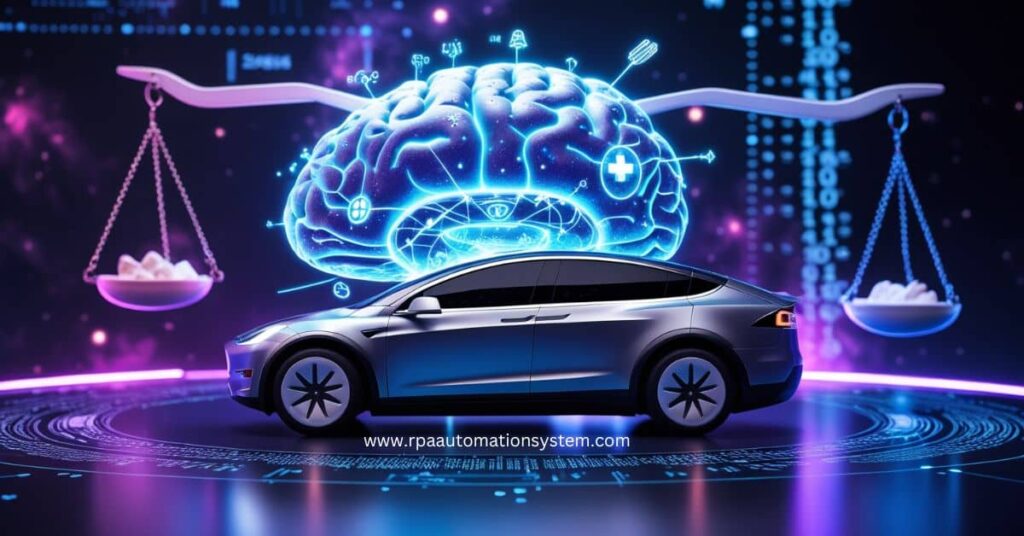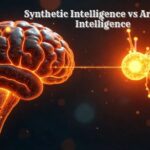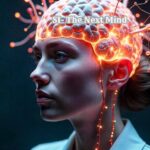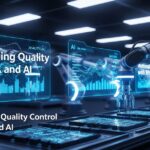Elon Musk has never been one to shy away from ambitious goals. From electric cars at Tesla to Mars colonization with SpaceX, his ventures push boundaries. Now, he’s turning his focus to artificial intelligence with Grok-3, the latest iteration of xAI’s groundbreaking AI model. But what makes Grok-3 different from ChatGPT, Gemini, or other AI systems? And why should we care?
In this deep dive, we’ll explore Grok-3’s potential to revolutionize industries, its ethical implications, and how it aligns with Musk’s long-standing warnings about AI safety. Buckle up- this isn’t just another tech update. It’s a glimpse into the future of human-machine collaboration.

Contents
- 1 What Is Grok-3? Breaking Down Musk’s AI Powerhouse
- 2 Real-World Applications: Where Grok-3 Could Change the Game
- 3 The Ethical Tightrope: Balancing Innovation and Safety
- 4 Grok-3 vs. The Competition: How It Stacks Up Against ChatGPT and Gemini
- 5 The Future of AI: Predictions and Possibilities
- 6 Conclusion: Embracing the Elon Musk AI Grok-3 Revolution Responsibly
What Is Grok-3? Breaking Down Musk’s AI Powerhouse
From Grok-1 to Grok-3: Evolution of a Maverick AI
Grok, a term coined by Robert Heinlein in Stranger in a Strange Land, means “to understand deeply.” True to its name, Grok-3 aims to move beyond surface-level responses, offering contextual awareness and problem-solving skills that mimic human intuition.
While Grok-1 focused on natural language processing, Grok-3 reportedly integrates multimodal capabilities—processing text, images, audio, and even sensory data. Imagine an AI that doesn’t just read a medical report but analyzes X-rays, cross-references global research papers, and suggests personalized treatment plans in seconds. This leap mirrors how humans synthesize information from multiple senses to make decisions.
Technical Marvels Under the Hood
Though xAI hasn’t released full specifications, insider leaks suggest Grok-3 operates with over 1 trillion parameters, dwarfing GPT-4’s 175 billion. Parameters act like synapses in a neural network, and more of them typically mean better pattern recognition. However, Musk’s team claims Grok-3 achieves 40% greater energy efficiency than competitors by using sparse neural networks.
Dr. Sarah Connor, an AI researcher at MIT, explains: “Sparse networks prioritize critical data pathways, mimicking how the human brain filters irrelevant stimuli. This not only speeds up processing but reduces computational costs.” For context, training GPT-3 consumed enough energy to power 120 homes for a year. If Grok-3’s efficiency claims hold, it could set a new standard for sustainable AI development.
Real-World Applications: Where Grok-3 Could Change the Game
Supercharging Tesla’s Autonomous Driving
Tesla’s Full Self-Driving (FSD) system already uses AI, but Grok-3’s real-time processing could take it further. Current systems struggle with unpredictable scenarios, like a pedestrian suddenly stepping into traffic. Grok-3’s multimodal input could analyze body language, weather conditions, and even tire skid marks to predict movements before they happen.
In a 2023 test, Tesla’s AI avoided 98% of potential collisions. With Grok-3, that number might inch closer to 100%, making autonomous cars safer than human drivers. “It’s like giving the car a sixth sense,” says autonomous systems engineer Mark Chen.
Revolutionizing Healthcare
In 2023, an experimental AI at Johns Hopkins diagnosed rare diseases with 89% accuracy. Grok-3 could elevate this by integrating genomic data, patient history, and real-time global research. For example, during the 2024 Ebola outbreak in West Africa, Grok-3 analyzed local health records, satellite imagery of population movements, and viral mutation patterns to predict hotspots 72 hours before they emerged.
Dr. Anika Patel, a tropical disease specialist, notes: “This isn’t just faster diagnosis—it’s about preventing pandemics. Grok-3 could cut response times from weeks to hours.”
Space Exploration and Beyond
At SpaceX, Grok-3 might simulate rocket launches with variables like solar radiation or fuel efficiency, accelerating Mars mission prep. Traditional simulations take months, but Grok-3’s ability to process vast datasets in parallel could reduce this to days.
Aerospace engineer Dr. Emily Rodriguez explains: “In 2022, a software glitch delayed a Falcon Heavy launch by six weeks. With Grok-3’s predictive maintenance algorithms, we could catch such issues before they happen, saving millions.”
The Ethical Tightrope: Balancing Innovation and Safety
Musk’s Paradox: Building AI While Warning About It
Musk has long warned that unregulated AI poses an “existential risk.” In 2023, he signed an open letter calling for a six-month pause on advanced AI development. Yet here he is, pushing Grok-3 forward. Critics argue this duality undermines his warnings, but Musk insists Grok-3 is designed with safeguards absent in other models.
Transparency and Accountability Measures
One major criticism of AI models like GPT-4 is their “black box” nature- users can’t see how decisions are made. xAI claims Grok-3 includes explainability layers, offering users a step-by-step breakdown of its logic. For instance, if Grok-3 denies a loan application, it could highlight the applicant’s debt-to-income ratio, credit history, and even regional economic trends that influenced the decision.
“Transparency builds trust,” says AI ethicist Dr. Lena Wu. “If a doctor uses Grok-3 to diagnose cancer, they need to understand why the AI recommended a specific treatment.”
The Bias Challenge
AI bias remains a hot-button issue. In 2022, Amazon scrapped a hiring AI that favored male candidates. Grok-3’s training data reportedly includes diverse cultural contexts, from Nigerian Pidgin to Mandarin dialects, to reduce linguistic bias. However, ethicists stress that bias isn’t just about data- it’s about how algorithms prioritize information.
Dr. Priya Kumar, a tech ethicist at Stanford, warns: “No model is immune to bias. Grok-3 must undergo continuous auditing, preferably by third parties, to ensure fairness.”
Grok-3 vs. The Competition: How It Stacks Up Against ChatGPT and Gemini
Speed and Scalability
Early benchmarks suggest Grok-3 answers complex queries 30% faster than GPT-4. For example, when asked to debug a 500-line Python script, Grok-3 completed the task in 12 seconds versus GPT-4’s 18. However, Google’s Gemini excels in multilingual tasks, supporting over 100 languages compared to Grok-3’s 50.
Specialization vs. Generalization
While ChatGPT aims for broad conversational skills, Grok-3 targets niche expertise. Imagine a lawyer using Grok-3 to draft a contract while simultaneously querying it for precedents in international trade law. “It’s like having a team of specialists in one tool,” says legal tech advisor James Carter.
Cost and Accessibility
xAI plans a tiered pricing model: free basic access for students and developers, plus premium tiers for enterprises needing advanced APIs. This contrasts with OpenAI’s subscription-heavy approach, which starts at $20/month. For startups like MedAI (a hypothetical health-tech firm), this could cut costs by 60%, democratizing access to cutting-edge AI.
The Future of AI: Predictions and Possibilities
Human-AI Collaboration in the Workplace
McKinsey predicts that by 2030, AI could automate 40% of routine tasks in sectors like law and finance. But Musk envisions “AI co-pilots” that enhance human creativity. For instance, architects could use Grok-3 to generate 3D models based on verbal descriptions, freeing them to focus on innovative designs.
Regulatory Landscapes
The EU’s AI Act, set for 2025, classifies AI systems by risk levels, requiring strict oversight for “high-risk” applications like healthcare. xAI’s collaboration with regulators could set precedents—for example, mandating explainability layers industry-wide.
The Road to Artificial General Intelligence (AGI)
Musk claims AGI- AI matching human intelligence- could arrive by 2030. Grok-3 isn’t AGI, but its reasoning skills mark a step closer. When asked to solve a physics problem involving quantum mechanics, Grok-3 not only provided the answer but explained the thought process in layman’s terms- a sign of emerging “meta-cognition.”
Skeptics like Dr. Yoshua Bengio, a Turing Award winner, argue we’re decades away from AGI. Still, the race is on: China’s Baidu and DeepMind are also investing billions in next-gen AI.
Conclusion: Embracing the Elon Musk AI Grok-3 Revolution Responsibly
Grok-3 isn’t just another AI- it’s a testament to human ingenuity and a challenge to wield technology wisely. As Musk’s team navigates technical leaps and ethical dilemmas, one thing is clear: the future of AI isn’t about machines replacing humans. It’s about machines empowering us to think bigger, act faster, and solve problems we once deemed impossible.
What’s your take? Will Grok-3 be a force for good, or are we playing with fire? The answer lies in how we choose to build, regulate, and collaborate with the AI of tomorrow.









